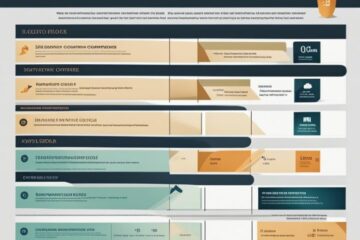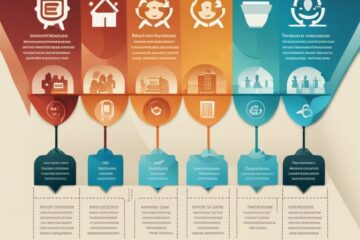You may have heard of Customer Data Platforms (CDPs) in marketing and data management. But what exactly is a CDP and why is it such an important tool for businesses today? A CDP is a powerful software system that centralizes and organizes customer data from various sources to create a single customer profile. This comprehensive view allows businesses to analyze and utilize customer data effectively for targeted marketing campaigns, improved customer experiences, and overall business growth.
Key Takeaways:
- CDP stands for Customer Data Platform. CDPs are software solutions that aggregate and manage customer data from multiple sources to create a unified customer profile.
- CDPs help businesses deliver personalized marketing campaigns. By analyzing customer behavior and preferences, CDPs enable businesses to tailor their marketing efforts to individual customers.
- CDPs improve customer experience. By providing a 360-degree view of the customer, CDPs empower businesses to create seamless and personalized interactions across all touchpoints.
- CDPs ensure data privacy and compliance. With built-in security measures and compliance features, CDPs help businesses adhere to data protection regulations and maintain customer trust.
- CDPs enable data-driven decision-making. By offering insights derived from unified customer data, CDPs empower businesses to make informed decisions that drive growth and profitability.
- CDPs are versatile and scalable. Whether you’re a small startup or a large enterprise, CDPs can be customized to meet your specific needs and can grow with your business.
- CDPs bridge the gap between marketing and IT teams. By providing a centralized platform for customer data, CDPs facilitate collaboration between marketing and IT departments, leading to more effective strategies and campaigns.
Understanding Customer Data Platforms (CDPs)
Definition of a CDP
The term Customer Data Platform (CDP) refers to a software system that gathers and organizes customer data from various sources into comprehensive customer profiles. These profiles are then used to provide personalized marketing experiences, leading to improved customer engagement and loyalty. CDPs are designed to create a unified view of each customer by integrating data from sources such as websites, mobile apps, CRM systems, and more.
Key Functions of CDPs
Customer Data Platforms perform several key functions imperative for effective customer relationship management. These include data collection, data unification, customer profile creation, segmentation, and activating data for marketing campaigns. By collecting and organizing data from multiple touchpoints, CDPs allow businesses to better understand their customers’ behavior and preferences, enabling them to deliver highly targeted and personalized interactions.
Having a CDP in place can enable businesses to consolidate customer information efficiently, leading to smoother marketing processes, increased efficiency, and ultimately, better customer satisfaction.
The Architecture of a Customer Data Platform
There’s no denying that the architecture of a Customer Data Platform (CDP) is a crucial element in its functionality. The way a CDP is designed influences how data is collected, integrated, and utilized to drive personalized marketing strategies and enhance customer experiences.
Data Collection Framework
Framework: The data collection framework of a CDP is the backbone of its operation. It consists of various mechanisms for gathering information from multiple sources, including website visits, mobile apps, social media interactions, email responses, and more. This framework ensures that all relevant customer data is captured in real-time and stored securely for analysis to create a comprehensive customer profile.
Data Integration and Unification
For any CDP to be effective, it must have a robust data integration and unification process in place. This involves merging data from different sources, formats, and systems into a single, coherent view of the customer. Having a unified view of customer data is imperative for delivering personalized experiences, targeted marketing campaigns, and accurate analytics to drive business growth.
Data integration and unification are challenging tasks due to the diversity and volume of data that organizations deal with daily. However, modern CDPs leverage advanced technologies like machine learning and artificial intelligence to automate and streamline this process, ensuring that data is clean, deduplicated, and consistently updated across all touchpoints.
The Role of CDPs in Modern Business
Enhancing Personalization Efforts
To enhance personalization efforts, Customer Data Platforms (CDPs) play a crucial role in aggregating, organizing, and analyzing customer data from various sources. By centralizing all customer information, CDPs provide businesses with a comprehensive view of each customer’s interactions and preferences. This enables companies to create highly personalized and targeted marketing campaigns, recommendations, and communications tailored to individual customer needs.
Streamlining Customer Interactions Across Channels
To streamline customer interactions across channels, businesses can leverage CDPs to ensure a seamless and consistent experience for their customers. By unifying data from online and offline touchpoints, CDPs enable businesses to deliver relevant and timely messages to customers across multiple channels, such as email, social media, websites, and mobile apps. This omnichannel approach helps increase customer engagement and loyalty by providing a cohesive brand experience no matter where the customer interacts with the company.
Businesses that effectively utilize CDPs can create a 360-degree view of their customers, allowing them to personalize interactions and deliver targeted marketing messages across various touchpoints. This seamless integration of data leads to improved customer satisfaction, increased retention rates, and ultimately, higher revenue for the business.
Benefits of Implementing a CDP
Real-Time Insights and Actions
Benefits of implementing a Customer Data Platform (CDP) include the capability to provide real-time insights and actions. With a CDP, businesses can access up-to-the-minute data on customer interactions across various touchpoints. This allows them to analyze customer behavior instantly and make informed decisions promptly. By leveraging real-time insights, companies can personalize customer interactions and offer targeted marketing campaigns tailored to individual preferences and behaviors.
Improved Customer Experiences
Implementing a CDP leads to improved customer experiences as it enables businesses to gain a comprehensive view of each customer. By consolidating data from multiple sources into a unified customer profile, companies can deliver seamless and personalized experiences at every touchpoint. This level of personalization fosters customer loyalty and satisfaction, ultimately driving increased engagement and revenue.
To further enhance customer experiences, businesses can use the insights gained from the CDP to anticipate customer needs and preferences proactively. By understanding customer behavior in real-time, companies can offer timely and relevant recommendations, ultimately creating a more engaging and satisfying customer journey.
Differences Between CDPs and Other Data Management Systems
CDP vs CRM: What’s the Difference?
Unlike Customer Relationship Management (CRM) systems, Customer Data Platforms (CDPs) focus on aggregating and unifying customer data from multiple sources in real-time. While CRM systems primarily manage and track customer interactions and sales opportunities, CDPs provide a more comprehensive view of the customer by integrating data from various touchpoints, both online and offline.
CDPs excel in creating a 360-degree customer view by combining first-party data with other sources to help marketers personalize campaigns and improve customer experiences. In contrast, CRM systems are more transactional in nature, focusing on managing existing relationships rather than acquiring new customers or enhancing customer understanding.
CDP vs DMP: Understanding the Distinctions
Understanding the differences between Customer Data Platforms (CDPs) and Data Management Platforms (DMPs) is crucial for businesses looking to leverage data effectively. While both systems handle data, they serve distinct purposes. CDPs focus on individual-level data, creating unified customer profiles to drive personalized marketing efforts, whereas DMPs aggregate audience data to target specific segments for advertising purposes.
This distinction is vital in today’s data-driven landscape where personalization is key to engaging customers. CDPs prioritize building long-term customer relationships by analyzing and utilizing individual customer data to tailor experiences, while DMPs are more geared towards anonymized audience targeting for ad campaigns across various platforms.
Choosing the Right Customer Data Platform
Key Considerations Before Selecting a CDP
To choose the right Customer Data Platform (CDP) for your business, there are several key considerations to keep in mind. Firstly, you need to assess your specific business needs and objectives. Understanding what you want to achieve with a CDP will help you narrow down your options and focus on platforms that align with your goals. Additionally, consider the scalability and flexibility of the CDP. Ensure that the platform can grow with your business and adapt to future changes in your data management needs.
Questions to Ask Potential CDP Providers
When evaluating different CDP providers, it’s vital to ask the right questions to ensure you choose the best fit for your organization. Inquire about the data integration capabilities of the CDP and how it can unify data from various sources. Understanding the level of data security and compliance measures is also crucial to protect your customer data. Additionally, ask about the level of customer support and training offered by the provider to ensure a smooth implementation process.
To make an informed decision when choosing a CDP provider, assess their track record and reputation in the industry. Look for providers with a proven history of successful implementations and positive reviews from customers. A reliable provider should be transparent about their data processing practices and offer clear insights into how they safeguard data privacy and comply with regulations.
Implementing a CDP in Your Organization
All organizations aiming to implement a Customer Data Platform (CDP) should follow a strategic approach to ensure successful adoption.
Steps for Successful CDP Adoption
One key step in successful CDP adoption is to clearly define the objectives and goals you wish to achieve with the platform. This involves identifying specific use cases such as improving customer segmentation, personalization, or targeting for marketing campaigns. Additionally, organizations must ensure that they have the necessary data governance policies in place to maintain data quality, security, and compliance throughout the implementation process.
Best Practices for Maximizing CDP ROI
Successful implementation of a CDP requires organizations to focus on best practices that can maximize Return on Investment (ROI). With a CDP in place, companies can streamline their marketing efforts, enhance customer experiences, and drive revenue growth. By utilizing the platform’s capabilities to unify customer data from various sources, organizations can gain valuable insights that lead to more targeted and personalized marketing strategies. Ultimately, this results in improved customer engagement and loyalty, translating to higher ROI.
Challenges and Considerations
Data Privacy and Security Concerns
Now, as businesses adopt Customer Data Platforms (CDPs) to leverage customer data for better marketing and sales strategies, data privacy and security concerns are paramount. With the increasing instances of data breaches and stricter data protection regulations like GDPR and CCPA, ensuring the safety and proper use of customer data is non-negotiable.
With cyber threats evolving rapidly, CDP users must prioritize implementing robust encryption methods, access controls, and data anonymization techniques to safeguard sensitive customer information. It is imperative to choose CDP providers that adhere to the highest standards of data security and privacy to avoid potential breaches and maintain customer trust.
Integrating Legacy Systems with CDPs
Systems that have been in place for years often hold valuable customer data that can enhance the effectiveness of a CDP. However, integrating legacy systems with modern CDPs can present challenges due to differences in data formats, structures, and compatibility issues. To succeed in this process, organizations need to conduct a thorough audit of their existing systems and data sources, identify redundancies, and develop a comprehensive integration strategy.
The Future of Customer Data Platforms
Once again, the landscape of customer data platforms (CDPs) is rapidly evolving to meet the increasing demands of businesses for personalized and data-driven marketing strategies. As technology advances and customer expectations continue to rise, the future of CDPs holds exciting possibilities for businesses looking to enhance their customer experiences and drive growth.
Emerging Trends in CDP Technology
On the forefront of CDP technology are advancements in artificial intelligence and machine learning capabilities, enabling businesses to gain deeper insights into customer behavior and preferences. Real-time data processing is becoming more prevalent, allowing for immediate responses and personalized interactions with customers across various channels. Additionally, the integration of Internet of Things (IoT) data into CDPs is projected to provide companies with a more comprehensive view of their customers’ interactions, both online and offline.
Predictions for CDP Evolution and Industry Impact
For businesses, the evolution of CDPs is likely to result in even more robust and seamless integrations with other marketing technologies, creating a unified platform for managing customer data and marketing campaigns. As CDPs become increasingly sophisticated, the industry impact is expected to include greater levels of personalization, improved customer engagement, and enhanced data privacy measures. This evolution will empower businesses to deliver more targeted and relevant marketing initiatives, ultimately driving higher conversion rates and customer loyalty.
Understanding the future of Customer Data Platforms requires businesses to stay informed about the latest trends and predictions shaping the industry. Embracing emerging technologies and understanding their impact on customer data management will be crucial for companies looking to stay ahead of the curve in an increasingly competitive marketplace.
Conclusion
Taking this into account, a Customer Data Platform (CDP) is a powerful tool that allows businesses to consolidate and organize customer data from various sources to create a unified customer profile. By integrating data from different touchpoints, a CDP enables businesses to gain a comprehensive understanding of their customers, leading to more personalized and targeted marketing campaigns.
Ultimately, a CDP helps businesses improve customer experiences, increase customer retention, and drive revenue growth. By leveraging the insights derived from a CDP, companies can make data-driven decisions that are aligned with their customers’ needs and preferences, ultimately leading to a more successful and customer-centric business strategy.
FAQ
Q: What is a CDP?
A: A CDP, or Customer Data Platform, is a type of software that collects and organizes customer data from various sources to create a unified customer profile.
Q: How does a CDP differ from other marketing tools?
A: Unlike other marketing tools, a CDP focuses specifically on gathering and managing customer data to provide a comprehensive view of each individual customer.
Q: What are the key features of a CDP?
A: Key features of a CDP include data integration from multiple sources, data quality management, customer profile unification, and the ability to segment and activate data for marketing campaigns.
Q: How can businesses benefit from using a CDP?
A: Businesses can benefit from using a CDP by gaining insights into customer behavior, improving personalization efforts, enhancing customer experiences, and increasing overall marketing effectiveness.
Q: What types of data can be managed by a CDP?
A: A CDP can manage various types of data, including demographic information, purchase history, website interactions, email engagement, and social media activity, among others.
Q: How does a CDP help with customer segmentation?
A: A CDP helps with customer segmentation by allowing businesses to create highly targeted audience segments based on specific criteria, such as behavior, demographics, or engagement level.
Q: What are some popular CDP vendors in the market?
A: Some popular CDP vendors in the market include Salesforce CDP, Segment, BlueConic, Tealium, and Optimizely, among others.









